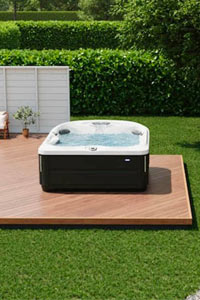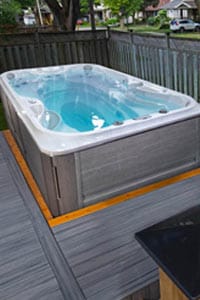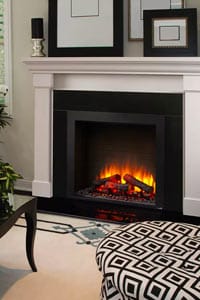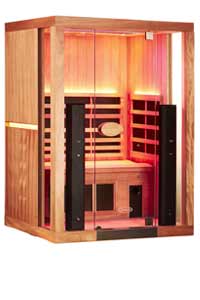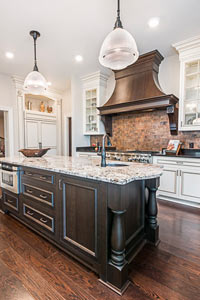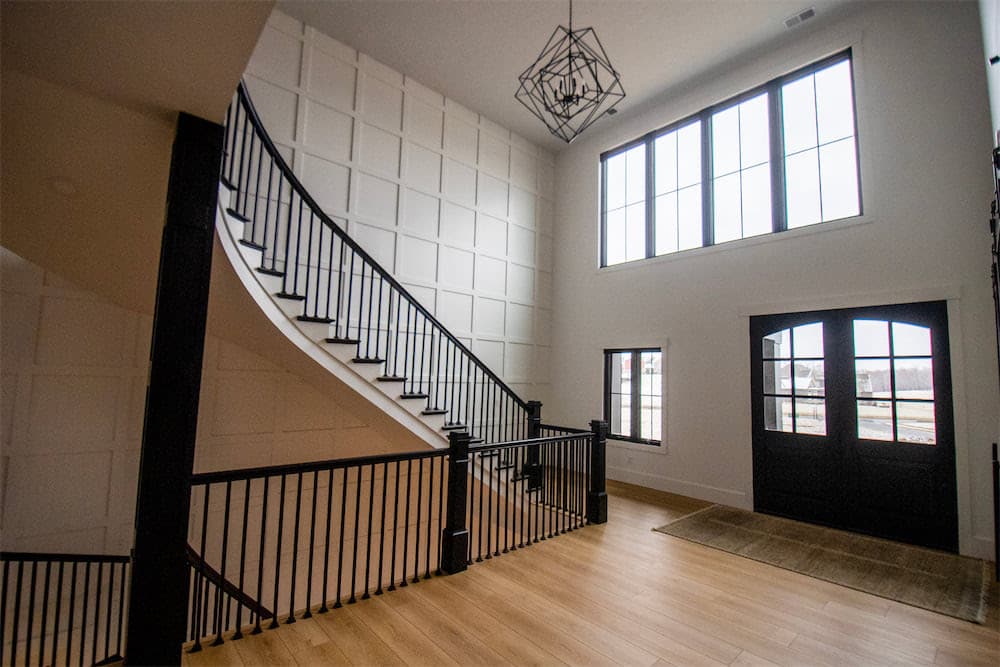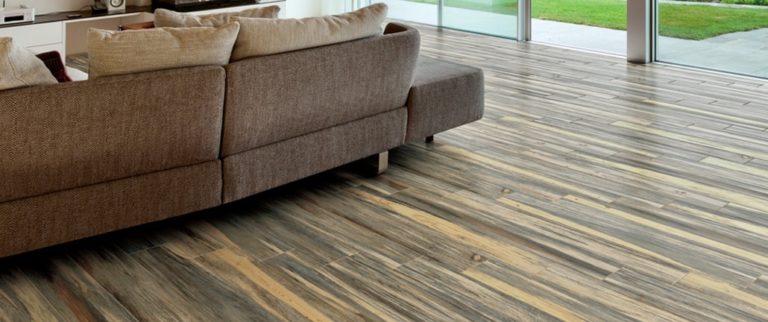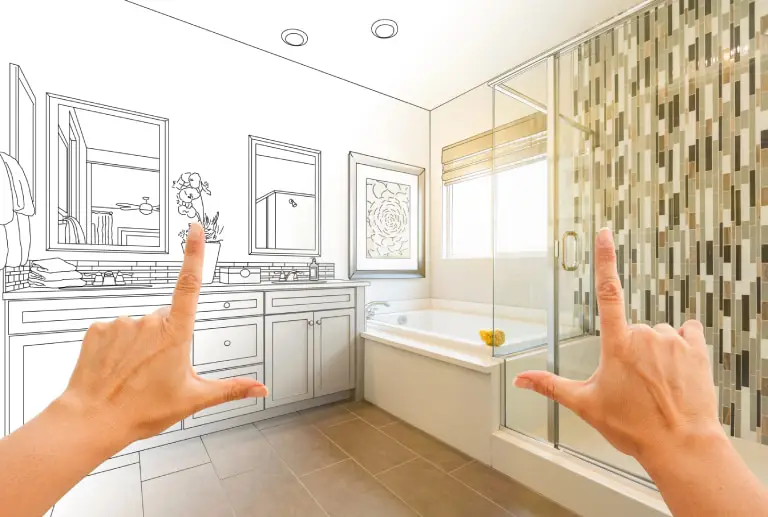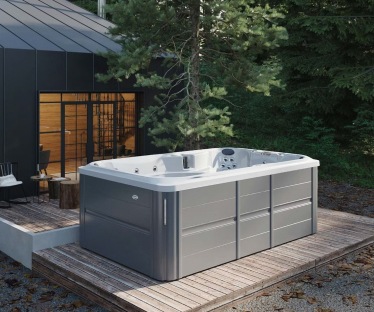Your home is a reflection of your personality. Whether you’re in the process of designing your new house or you’re simply looking to give your space a makeover, choosing your flooring is a big piece of the puzzle.
Not only is customizing it an opportunity to complement your personal taste, but you also get the chance to set the tone for your home.
For some homeowners, choosing new flooring is a fun and exciting project. For others, trying to pick out the most suitable flooring can be overwhelming if they don’t know where to start. If you’re the latter—or simply looking for a helpful guide—you’ve come to the right place.
The truth is, there are a lot of factors that should go into the decision, ranging from practicality and functionality to aesthetics. Should you hire a contractor or install the flooring yourself? Then there’s the age-old question: carpeting, hardwood, or laminate?
And it’s not just a one-and-done decision—each room has a different purpose, which requires different flooring. So, how do you choose?
Not to worry—we’ve put together this complete guide to answer all of your questions to help you create your ideal living space. We hope it makes a world of difference in your search for finding the best flooring for your home. Let’s dive in!
Space
One of the most important factors when choosing the flooring for your home is deciding which room it will be laid in. Since not every floor type is suitable for every space, it needs to be assessed on a room-by-room basis—rather than as a whole.
You’ll need to think about how much foot traffic each room will receive, the environment, and if moisture and humidity are considerations.
Kitchen
Do you like to entertain? For many homeowners, the kitchen is the number one favorite social spot to cook and enjoy celebratory gatherings. If that sounds like you, then it’s likely to be a high-traffic space. The kitchen is also the room that encounters the most spills and cooking stains, so you’ll need flooring that can handle that.
Laminate, tile and vinyl floors are common choices for the kitchen because they’re moisture-resistant and cost-effective (especially when compared to hardwood).
Porcelain and engineered hardwood are also go-to’s among homeowners because they’re resistant to stains, scratches, cleaning agents, and moisture.
They’re also diverse in the sense that they can easily be color-matched to suit your kitchen countertops, tile backsplash, and of course, appliances.
Bathroom
Did you know that the bathroom is the room that receives the highest amount of foot traffic in most homes? Keep that in mind, and be sure to select durable flooring.
The bathroom should also be able to handle moisture and even be prepared for possible plumbing leaks. This will help avoid mold in the future.
Ceramic tile and vinyl are both great options for this, while materials like water-resistant laminate have recently been trending as well.
Here’s another point to consider—are the bathrooms in your home larger or fairly small? Large tiles are great options for decently sized spaces, but using them in a small room will make it appear even smaller. You could also wind up with awkward cuts where the tile meets the walls—and no homeowner wants that.
Instead, try getting creative with mosaic marble or wood-look plank, which gives the illusion of a larger space and won’t leave awkward cuts if you stagger the tiles.
Bedroom
For centuries, carpet has been the go-to flooring choice for bedrooms because of its many benefits. It’s soft, cozy, affordable, and reduces sound—what’s not to love? On the other hand, many homeowners these days are after something more modern and easier to clean. Enter—hardwood.
Hardwood floors create a beautiful, modern finish as well as boost your home’s resale value. The opposite of carpeting, hardwood causes sounds to resonate and gives your room a colder feel.
These could be seen as pros or cons, depending on your preference. If you’re concerned about sound and discomfort, then you can always add an area rug to give your bedroom a cozier feel.
Living Room
Here’s another room that will likely need durable flooring. If your family and guests are coming and going, your living room should be able to withstand that activity. Carpeting was previously a living room favorite, but hard surfaces such as wood, laminate, and vinyl have taken their place in most newer homes.
Dining Room
Hardwood remains a classic choice for dining room floors because of its sheer durability. It’s sophisticated, easy to maintain, and you don’t have to worry about cleaning up spills or stains after weekend dinner parties or spilled coffee in the morning. Other household favorites are vinyl and laminate, both of which are about as durable and easy to clean.
If you’re unsure if a specific flooring type will look in a particular room, the best thing you can do is get some flooring samples first. Lay them out and see if the style will suit the space before fully committing to the real deal.
Sometimes that’s all you need to imagine the final look. Who knows, maybe it will even make or break your decision on a particular flooring type.
Lastly, the amount of space in each room should be a factor as well. Many homeowners opt for lighter flooring to open up smaller spaces, while dark accents work wonders in creating warmth in spacious rooms. The choice is yours!
Your Lifestyle
Now it’s time to look at your lifestyle. Choosing flooring that fits your family’s way of life is equally as important as deciding where the floor will be laid in your home. Do you have pets, children, a large household, lots of guests, or enjoy regularly hosting parties?
If the answer is a resounding yes for most of these, then it would be in your best interest to choose your flooring carefully.
Children’s toys and pet nails are major culprits of wear-and-tear when it comes to softwood floors, for example, so you may want something that is water- and scratch-resistant instead. If you have smaller pets, you may be able to get away with hardwood floors.
As for households with multiple pets or larger dogs, you’re better off with vinyl or laminate in the rooms where your animals will be spending the most time.
The same can be said for carpeting—accidents, animal hair, and a child’s spilled drinks can quickly accumulate and deteriorate the look of a nice, new carpet. You’ll need to keep up with regular vacuuming and carpet cleaning to preserve it.
Carpeted floors can also aggravate allergies if dust mites start to build up or mold grows under the surface. And if anyone in your family has asthma, you’ll want to steer clear of carpeting completely. This is especially true in the bedrooms where you’ll be spending a lot of time sleeping.
Aesthetic Appeal
Now that you’ve considered both lifestyle and functionality don’t forget that the aesthetic appeal of your home is what you’ll be left with for years to come.
You can easily switch up your painting or decor without much hassle, but most homeowners aren’t too keen on the idea of replacing their flooring every couple of years.
With that in mind, make sure to create a look that you’ll be happy with in the long run.
Modern Aesthetic
If you’re after modern flooring that takes on more of a minimalist aesthetic or an industrial theme, concrete could be an interesting and unique touch for your home.
On the other hand, bamboo’s pale blond coloring is another modern trend among eco-conscious homeowners these days, as is cork flooring.
Vintage Aesthetic
The demand for vintage flooring has skyrocketed in recent years. If you’re considering the vintage look yourself, you have several choices.
You could opt for parquet flooring, wide white oak planks, or even make use of reclaimed wood throughout your living spaces.
Black and white mosaic tile adds a beautiful antique touch to any bathroom (although it looks amazing with modern decor as well). Subway tile is also a wildly popular choice to this day, adding a classy vintage touch.
In the end, selecting the right flooring style comes down to your personal choice. Aim for the theme in each room to be consistent with that of the rest of your house. That doesn’t mean every room should have the same floors, but rather that there should be a cohesive feel with the surrounding rooms—and ideally, the rest of the house.
Lastly, it’s easy to get swept away with inspiration from show homes or while looking at beautiful homes. But before you go overboard in picking out your new flooring, the style should be a good fit with the rest of your decor as well.
Set Your Flooring Budget
While you want to make sure your flooring is functional, fits your lifestyle, and suits your style preference, you also need to decide if cost is a consideration. If you’re perfectly fine with spending a fortune on hand-scraped hardwood or designer ceramic floor tiles, then by all means!
If not, then you’ll likely need to account for the materials, delivery, and installation—whether you’re hiring a contractor or installing the floor yourself. But we’ll get into that in just a moment.
First, let’s take a look at some of the most popular budget-friendly flooring options and the average material cost before installation:
- Vinyl – starts at $3 to $5 per square foot.
- Laminate – the average cost is $2 to $4.
- Cork – starts at around $2 per square foot.
- Carpet – can cost between $3 to $5 for plush carpet.
- Ceramic tile – ranging from $3 to $5.
- Man-made tile – between $6 and $8.
- Installation
Now that you’ve decided on which flooring you want in which room, there’s one more consideration that ties in with budgeting. Are you going to be installing the flooring yourself or hiring a contractor? While you might easily find affordably priced flooring, that doesn’t mean the installation will be cheap (or easy!).
Before hiring someone to install your flooring, familiarize yourself with these red flags when hiring a contractor. Be sure to also get an idea of the average flooring costs before you move forward.
Our best advice is to thoroughly research companies in your area on Google in search of the most affordable price and stellar reviews. Word of mouth also goes a long way, especially if you happen to know anyone in your area who recently had new flooring installed.
Having a go at it yourself may also be extremely appealing to save on expenses. However, unless you’ve done it before or you’re a master of DIY projects, you’ll need to be fully prepared. Before starting your DIY flooring installation, familiarize yourself with these “10 Rookie Flooring Mistakes to Avoid During Your Next Reno.”
Maintenance
The last influencing factor for finding the best flooring is the amount of maintenance each floor type will require. Vinyl and laminate require very little maintenance on your part—all you need is a mop on standby.
Wood flooring is quite the opposite, requiring consistent upkeep to keep it looking fresh and new. Marble is also a lot of work since it’s porous and must be resealed regularly to preserve it.
Be honest with yourself about how much work you’re willing to put into floor maintenance before you commit. There are plenty of suitable options that don’t require much additional labor.
Find The Best Flooring for Your Home Today
Was the information in this guide helpful in finding the best flooring for your home? Remember to tackle the new flooring on a room-by-room basis to make your job easier.
Keep all of the above factors in mind, especially when it comes to selecting flooring around your family’s lifestyle.
To summarize: If durability and low maintenance are your priority, opt for laminate, tile, or luxury vinyl. If warm and cozy is the name of the game, then carpeting may be the best option for you. For a touch of elegance, consider timeless hardwood floors to enhance the look and resale value of your home. And, when it comes to bathroom flooring, you can’t go wrong with ceramic tile or porcelain.
Above all, don’t be afraid to have fun finding the best flooring for your home. Whether you’re designing your new house or renovating your current home, it’s not every day you get the chance to customize your space to your unique style.
If you have any further questions, feel free to get in touch with our experts at Koval Building Supply today!
